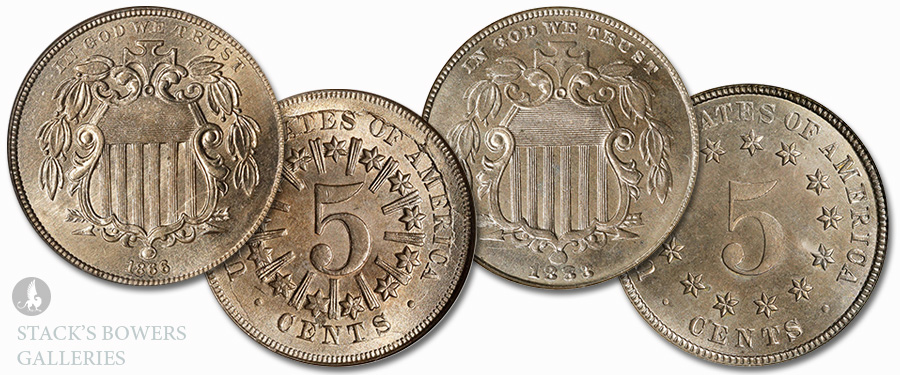
157 years ago this month, the first of a denomination that would become ubiquitous in U.S. commerce was struck at the U.S. Mint. The nickel five-cent piece was largely a product of Civil War exigency and lobbying from nickel mining interests whose champion, Joseph Wharton, namesake of the Wharton School of Finance at the University of Pennsylvania, is well-known in numismatic circles for his advocacy for nickel-based coinage.
In 1861 and 1862, as the Civil War wore on, silver half dimes, produced since the 1790s, followed all other silver coinage into the pockets of hoarders and speculators. Postal and Fractional Notes were produced to fill the void, including for the five-cent denomination, but the small notes proved unpopular. Though some coinage returned to circulation in the Civil War’s waning months, half dimes, like other silver coinage, remained elusive until the mid-to-late 1870s.
Noting the public’s willingness to use small denomination tokens with intrinsic value lower than face value, and motivated by the need to retire the unpopular Fractional notes, Mint officials advocated a base metal five-cent coin. Mint Director James Pollock wrote in his 1865 Annual Report: “From this nickel alloy, a coin of the denomination of five cents, and which would be a popular substitute for the five cent note, could easily be made. This suggestion, however, is respectfully submitted in view of the probable withdrawal of the smaller denomination of the fractional paper currency, and as preparative and aid to its accomplishment. This to continue only until the resumption of specie payments, or for a fixed and limited period.
In a country abounding in the precious metals, and with silver generally in excess, in time of peace, of all demands for coinage or other purposes tokens or coins of inferior alloy should not be permitted to take the place permanently of silver in the coinage of pieces above the denomination of three cents.”
The Act of May 16, 1866, authorized the nickel five-cent pieces and the first examples came off the coining presses in Philadelphia in June. Bearing designs by James Barton Longacre depicting a shield flanked by laurel branches and a pair of crossed arrows on the obverse and the denomination encircled by stars and rays on the reverse, the nickels were difficult to strike, and their designs proved polarizing. The design was panned in the American Journal of Numismatics and Wharton described the obverse design as “a tombstone surmounted by a cross and overhung by weeping willows.”
Shield nickels would prove relatively short-lived, ending 140 years ago this month in June 1883 according to Gloria Peters and Cynthia’s Mohon’s 1995 Complete Guide to Shield and Liberty Head Nickels. Nickel five-cent pieces would continue to be made, but featuring different designs, starting in 1883 with the Liberty Head motif by Charles Barber.
Visit our Archives for information on Shield nickels we have offered at auction. Visit StacksBowers.com to learn about upcoming auction offerings or to consign your items to one of our sales.





